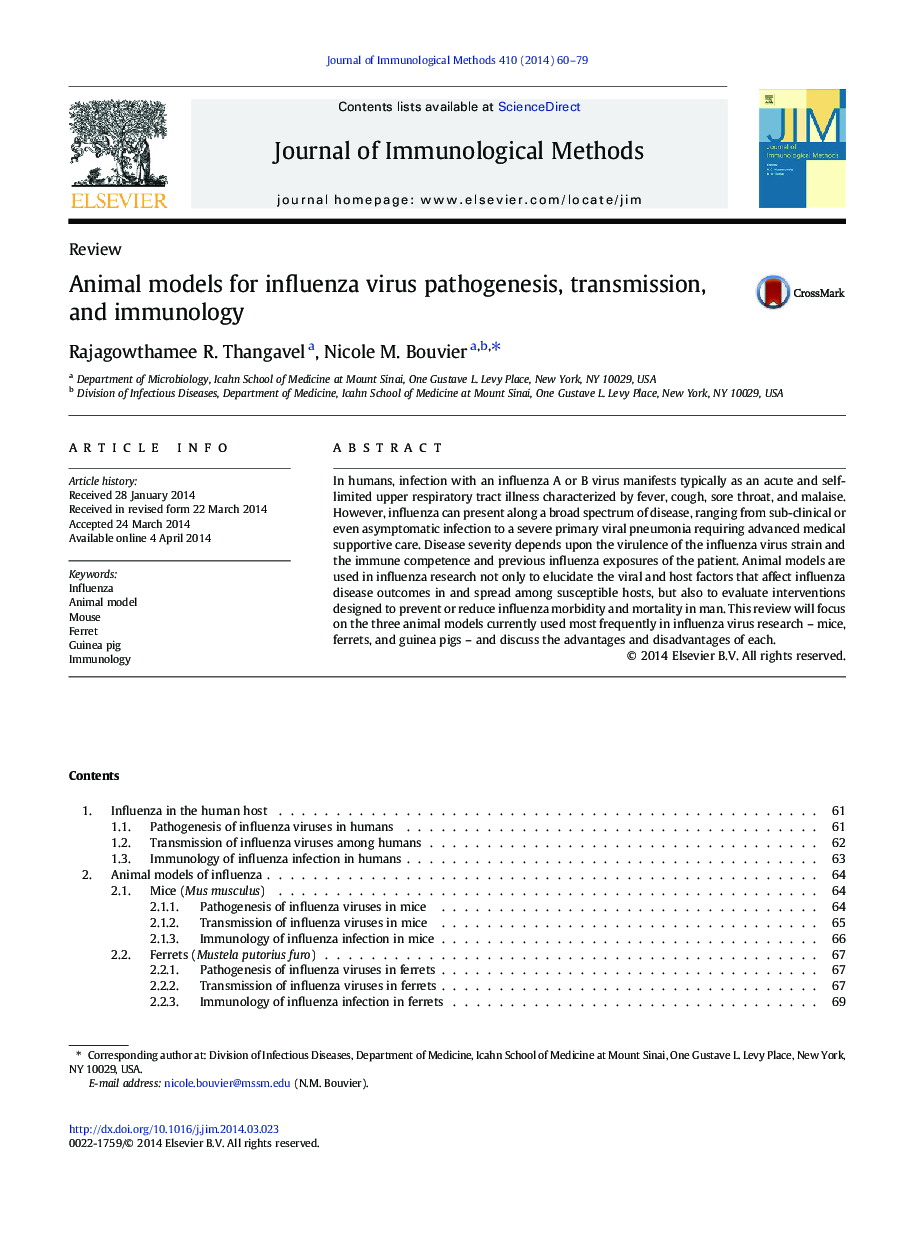| Article ID | Journal | Published Year | Pages | File Type |
|---|---|---|---|---|
| 2088145 | Journal of Immunological Methods | 2014 | 20 Pages |
•Influenza is usually an acute, self-limited, viral upper respiratory infection.•Animal models help to identify virus and host factors affecting human disease.•Mice, ferrets, and guinea pigs are commonly used to model human influenza.•Each model has unique advantages and disadvantages.
In humans, infection with an influenza A or B virus manifests typically as an acute and self-limited upper respiratory tract illness characterized by fever, cough, sore throat, and malaise. However, influenza can present along a broad spectrum of disease, ranging from sub-clinical or even asymptomatic infection to a severe primary viral pneumonia requiring advanced medical supportive care. Disease severity depends upon the virulence of the influenza virus strain and the immune competence and previous influenza exposures of the patient. Animal models are used in influenza research not only to elucidate the viral and host factors that affect influenza disease outcomes in and spread among susceptible hosts, but also to evaluate interventions designed to prevent or reduce influenza morbidity and mortality in man. This review will focus on the three animal models currently used most frequently in influenza virus research – mice, ferrets, and guinea pigs – and discuss the advantages and disadvantages of each.
